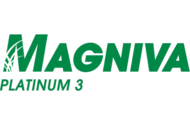Which crops are used for silage?
Silage is often produced from crops such as corn, grass, cereals and others. Extreme feed shortages over the past years have also driven dairy and beef producers to experiment with a range of non-traditional sources for silage such as canola, sugar cane, beans and pulses, sunflowers, cotton and others.
Do inoculants decrease silage losses?
Properly chosen inoculants help reduce silage losses during fermentation and feedout.
How do I store newly purchased silage inoculants?
Store in a cool and dry place in its original unopened package. Shelf life and composition of the MAGNIVA Forage Inoculants are guaranteed for 24 months from the date of production under these conditions.
How do I store an opened sachet of inoculant?
Squeeze or remove the air from the sachet. Repeatedly fold over the empty area to stop air from re-entering. The sachet should then be refrigerated (approximately 39 degrees Fahrenheit or 4 degrees Celsius). The product should be used within the next 15 days under these conditions.
How long do mixed inoculants last?
Once mixed with water, an inoculant should be used within 48 hours. Bacteria viability and product benefits are guaranteed under these conditions.
Should I store inoculants for the next season?
Unopened inoculant pouches can be stored in a cool, dry place from one year to another. Take care to respect the product’s shelf life/expiration date.
Do inoculants expire?
Yes, all bacterial products have an expiration date for use. Legally, these products must include the manufactured date and shelf life or expiration date even if there are usually no obvious signs (odor or solidified form) of being expired.
What is CFU?
CFU is an abbreviation for Colony Forming Units. This is the number of live bacteria that a product gives per gram of product or per gram of forage.
Which inoculant applicator should I use?
There are many different types of applicators. Before using your applicator, ensure it is clean and calibrated.
When using standard spray applicators, apply the product at a minimum of 250 milliliter/ton of fresh forage.
For balers and forage wagons, apply a minimum of 1 liter/ton of fresh forage.
The product may also be applied using a specific low-volume applicator at a minimum of 10 milliliters/ton of fresh forage. Dilution should be adapted to the appropriate applicator type.
What if I store inoculated and uninoculated silage together?
Only silage in the storage areas where the inoculatant was applied will likely be affected. The uninoculated silage will generally not benefit from the inoculated silage application.
How to apply silage inoculant?
To ensure the efficacy of MAGNIVA Silage Inoculants, use these recommended steps:
- Calculate how much inoculant you need
- Mix
- Stir
- Dilute
Read our instruction for mixing and application of MAGNIVA silage inoculants here.
Are MAGNIVA silage inoculants approved for use in my country?
Find MAGNIVA inoculants available in your country here.
Not all products are available in all markets nor are all claims allowed in all regions.









